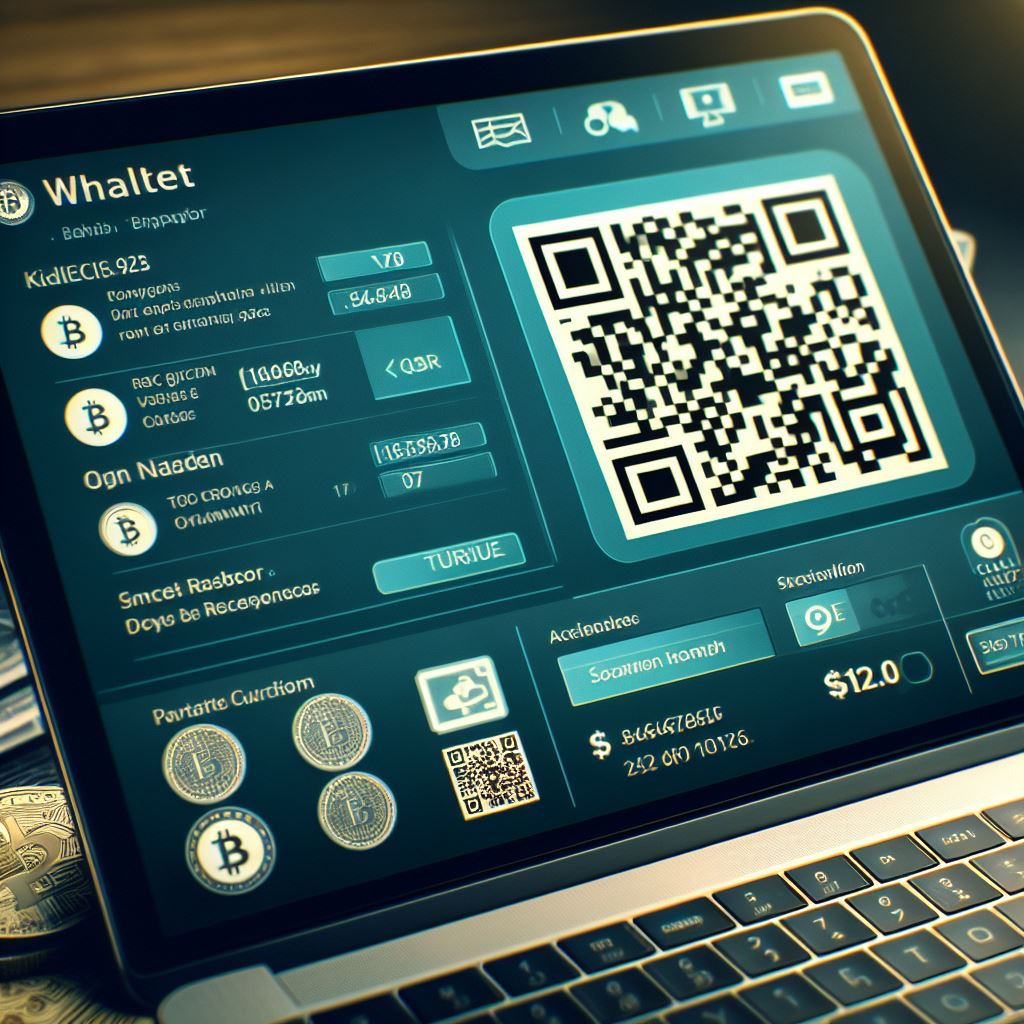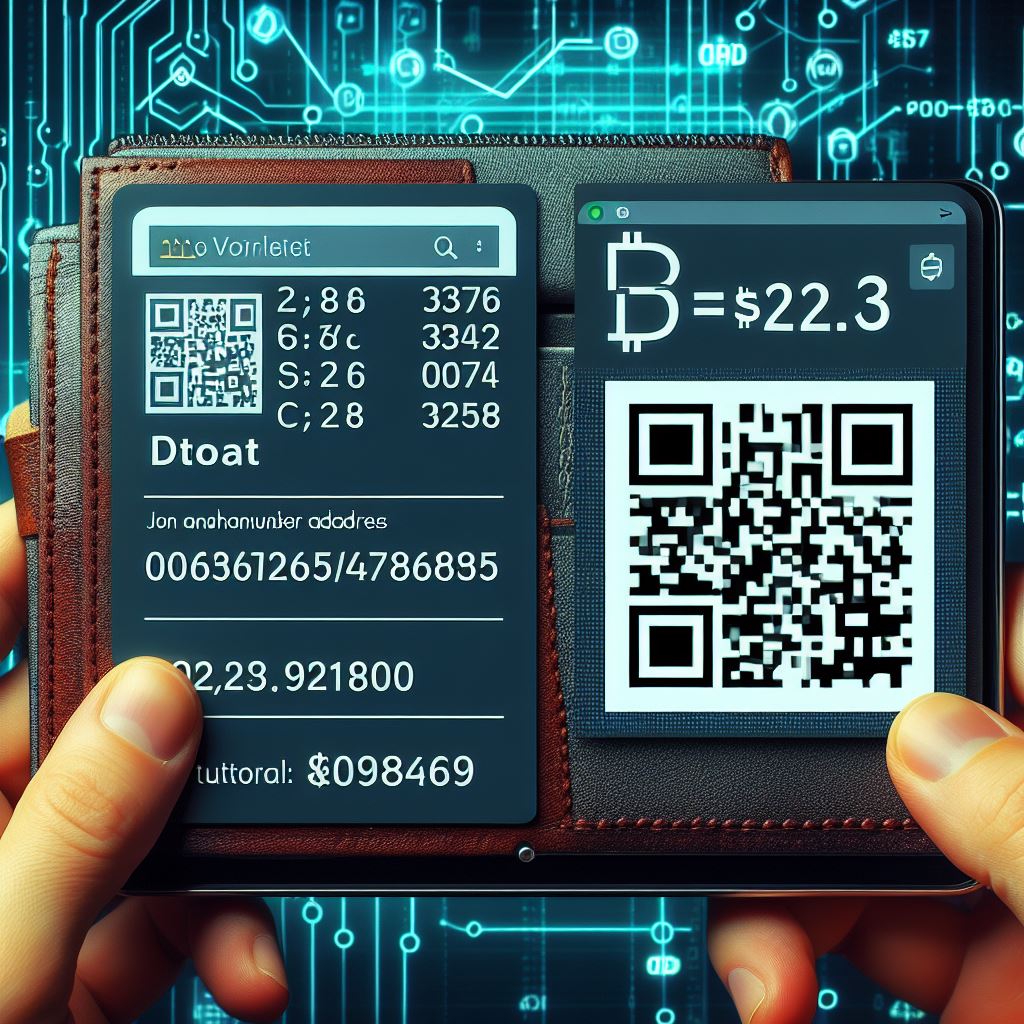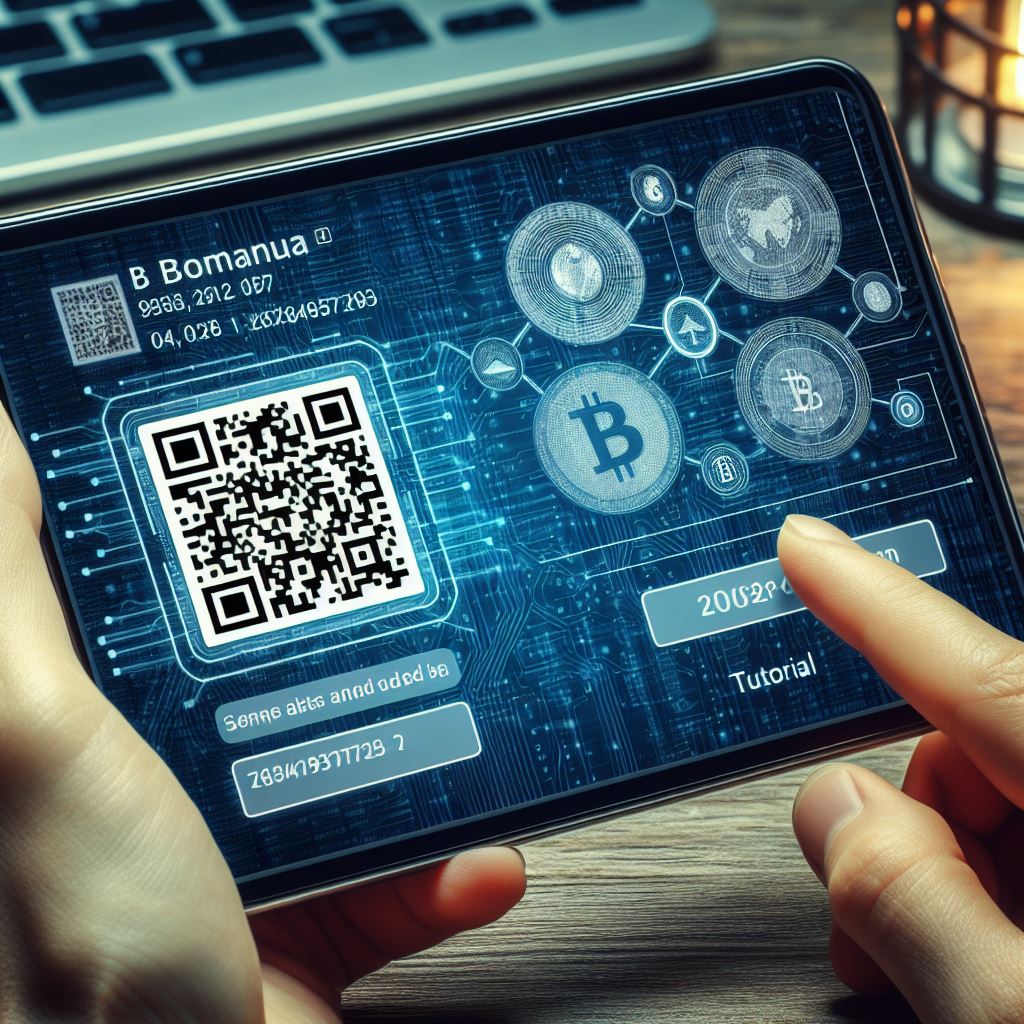What is Crypto Wallet Address?
A cryptocurrency wallet address is a unique string of characters used to receive, store, and send cryptocurrencies such as Bitcoin, Ethereum, or any other digital currency. Each cryptocurrency has its own format for wallet addresses.
These addresses are similar to a bank account number or an email address, but they are specifically designed for cryptocurrencies. When you want to receive cryptocurrency from someone else, you provide them with your wallet address. Likewise, when you want to send cryptocurrency to someone else, you need their wallet address.
It’s important to note that wallet addresses are case sensitive and must be entered exactly as they appear to ensure the transaction goes to the correct recipient. Additionally, while wallet addresses are safe to share publicly, you should never share your private keys or mnemonic phrases, as they grant access to your cryptocurrency holdings.




A crypto wallet address is basically an account number for your cryptocurrency holdings. It’s a unique string of letters and numbers that identifies your specific wallet on the blockchain network. Think of it like an email address, but for crypto.
Here’s a breakdown of how it works:
- Crypto Wallets Don’t Store Crypto: Cryptocurrencies themselves aren’t actually stored in your wallet. They exist on a massive public ledger called a blockchain.
- Wallets Store Keys: Your crypto wallet stores something called private keys, which are like secret codes that allow you to access your crypto on the blockchain.
- The Address is Public: The wallet address, on the other hand, is public information. You can share it with anyone who needs to send you cryptocurrency.
Here are some key points to remember about crypto wallet addresses:
- Different Blockchains, Different Addresses: The format of a wallet address depends on the specific cryptocurrency. A Bitcoin address will be different from an Ethereum address, for instance.
- Sending to the Wrong Address is Risky: If you accidentally send crypto to the wrong address, it’s almost impossible to get it back. Always double-check the address before hitting send!
Crypto Wallet Address Example
Sure, here’s an example of a Bitcoin wallet address:
1BvBMSEYstWetqTFn5Au4m4GFg7xJaNVN2
This is a randomly generated example of a Bitcoin wallet address. It consists of a string of alphanumeric characters, typically starting with a “1” for Bitcoin addresses. Each cryptocurrency has its own format for wallet addresses, so this format is specific to Bitcoin. When you want to receive Bitcoin from someone, you would provide them with this address.
Crypto wallet addresses look different depending on the cryptocurrency. Here are a couple of examples:
- Bitcoin (BTC): Bitcoin wallet addresses are between 26 and 35 characters long and consist of a mix of upper and lowercase letters and numbers. They often start with “1”, “3” or “bc1”. For example:
1Lbcfr7sAHTD9CgdQo3HTMTkV8LK4ZnX71 - Ethereum (ETH): Ethereum addresses are 42 characters long and start with “0x” followed by a long string of hexadecimal characters (letters and numbers from 0-9 and A-F). For example:
0x1ABC7154748D1CE5144478CDEB574AE244B939B5
Important Note: These are just examples, and it’s never recommended to share real crypto wallet addresses online. They should be treated like your bank account number and kept confidential.
How to create Crypto Wallet Address?
There are several ways to create a crypto wallet address, depending on the type of wallet you choose. Here’s a breakdown of the two most common options:
1. Using a Software Wallet:
- This is the easiest and most popular option for beginners. Software wallets are free apps you can download on your phone or computer.
- Popular choices include MetaMask, Electrum (for Bitcoin), and Exodus.
- When you create an account with a software wallet, a wallet address is automatically generated for you.
Here’s a general process (steps may vary slightly depending on the app):
- Choose a reputable software wallet provider.
- Download and install the app.
- Create an account (may involve setting a password).
- During the setup process, your wallet address and private key will be generated. Write down your private key securely! This is what grants access to your crypto on the blockchain.
2. Using a Hardware Wallet:
- Hardware wallets are considered the most secure option for storing cryptocurrency. They are physical devices that resemble a USB drive and store your private keys offline.
- Popular hardware wallet brands include Ledger and Trezor.
- When you set up a hardware wallet, it will generate your wallet address and private key.
Here’s a general process (steps may vary slightly depending on the device):
- Purchase a hardware wallet from a trusted retailer.
- Follow the device’s instructions to set it up.
- During setup, your wallet address and private key will be generated. Write down your private key securely! This is what grants access to your crypto on the blockchain and is stored offline on the hardware wallet itself.
Important Considerations:
- Security: No matter which method you choose, always back up your private key securely. This is essential for regaining access to your crypto if you lose your device or forget your password.
- Choosing a Wallet: Research different wallets to find one that meets your needs. Consider factors like security features, ease of use, and what cryptocurrencies it supports.
- Paper Wallets: There’s also a less common option called a paper wallet. This involves generating a private key offline and storing it on a piece of paper. While secure, it can be cumbersome to use and carries the risk of loss or damage.
Remember, before you create a crypto wallet address, it’s important to understand the different wallet options and choose one that best suits your security needs and technical comfort level.
How to create Crypto Wallet Address?
Creating a cryptocurrency wallet address typically involves using a cryptocurrency wallet application or service. Here’s a general outline of the process:
- Choose a Wallet: First, you need to choose a cryptocurrency wallet. There are different types of wallets, including software wallets (desktop, mobile, or web-based), hardware wallets (physical devices), and paper wallets (printed or written down). Decide which type of wallet suits your needs best.
- Download or Access the Wallet: If you’re using a software wallet, download and install the wallet application on your device or access it through a web browser if it’s a web-based wallet.
- Generate a New Address: Once you’ve set up your wallet, there should be an option to generate a new wallet address. This process will create a unique string of characters that will serve as your wallet address for receiving cryptocurrency.
- Backup Your Wallet: It’s crucial to back up your wallet properly. Depending on the type of wallet you’re using, this may involve writing down a recovery phrase (also known as a seed phrase), creating a backup file, or storing your private keys securely.
- Use Your Wallet Address: Once your wallet address is generated, you can start using it to receive cryptocurrency. Simply provide your wallet address to anyone who wants to send you cryptocurrency. Be sure to double-check the address when sharing it to avoid any mistakes.
- Manage Your Wallet: Keep your wallet software up to date and follow best security practices to protect your cryptocurrency holdings. This includes enabling two-factor authentication if available, using strong passwords, and being cautious of phishing attempts.
Remember that the process may vary slightly depending on the specific wallet you choose to use, but these steps provide a general overview of how to create a cryptocurrency wallet address.
What is the format of a crypto address? Do crypto wallets have addresses? How many digits is a crypto wallet? Is crypto address unique? What are the 3 types of crypto wallets? What is a crypto wallet code? What is the best type of crypto wallet? How do I access my crypto wallet? What is a crypto wallet for beginners? Is Binance a crypto wallet?
- Format of a crypto address: The format of a cryptocurrency address varies depending on the cryptocurrency being used. However, most addresses consist of a string of alphanumeric characters. For example, Bitcoin addresses typically start with a “1” or “3”, Ethereum addresses start with “0x”, and so on.
- Do crypto wallets have addresses? Yes, crypto wallets have addresses. Each wallet has its own unique address which is used to send and receive cryptocurrencies.
- How many digits is a crypto wallet? The length of a crypto wallet address varies depending on the cryptocurrency and the specific format being used. They can range from around 26 to 42 characters in length.
- Is crypto address unique? Yes, crypto addresses are unique. Each address is generated randomly and should only be used once per transaction to maintain security and privacy.
- What are the 3 types of crypto wallets? The three main types of cryptocurrency wallets are:
- Software wallets: These are applications or software programs that you install on your computer or mobile device. They can be further categorized into desktop wallets, mobile wallets, and web wallets.
- Hardware wallets: These are physical devices designed specifically for storing cryptocurrency keys offline, providing enhanced security.
- Paper wallets: These are physical documents containing a printed version of your cryptocurrency public and private keys, often generated using software.
- What is a crypto wallet code? Crypto wallet code typically refers to the software or algorithm used to generate and manage cryptocurrency wallets. This code can vary widely depending on the specific wallet implementation.
- What is the best type of crypto wallet? The best type of crypto wallet depends on individual preferences and requirements. Hardware wallets are often considered the most secure option for storing large amounts of cryptocurrency, while software wallets offer convenience and accessibility.
- How do I access my crypto wallet? You can access your crypto wallet through the wallet application or software provided by the wallet provider. This usually involves logging in with a password or passphrase and may also require additional authentication factors for security.
- What is a crypto wallet for beginners? For beginners, a software wallet such as a mobile or desktop wallet might be a good choice due to its ease of use and accessibility. These wallets typically have user-friendly interfaces and are suitable for managing smaller amounts of cryptocurrency.
- Is Binance a crypto wallet? Binance is primarily a cryptocurrency exchange platform, but it also offers a built-in wallet service where users can store their cryptocurrencies. However, it’s important to note that storing large amounts of cryptocurrency on exchanges is generally not recommended due to security risks. It’s advisable to transfer your cryptocurrency to a personal wallet where you control the private keys.
What is the format of a crypto address? Do crypto wallets have addresses? How many digits is a crypto wallet? Is crypto address unique? What are the 3 types of crypto wallets? What is a crypto wallet code? What is the best type of crypto wallet? How do I access my crypto wallet? What is a crypto wallet for beginners? Is Binance a crypto wallet?
Crypto Address Format:
- The format of a crypto address depends on the specific cryptocurrency. It’s a unique string of letters and numbers that identifies your wallet on the blockchain network.
- Bitcoin addresses are alphanumeric (26-35 characters) and often start with “1”, “3”, or “bc1”.
- Ethereum addresses are 42 characters long and begin with “0x” followed by hexadecimal characters.
Crypto Wallets and Addresses:
- All crypto wallets have addresses. It’s like your public bank account number for receiving crypto, while your private key is like your secret PIN for spending it.
Number of Digits in a Crypto Address:
- There isn’t a set number of digits. It varies depending on the cryptocurrency and format. (See above for examples)
Uniqueness of Crypto Addresses:
- Yes, every crypto wallet address is unique. This ensures your crypto goes to the right recipient.
3 Types of Crypto Wallets:
- Software Wallets: Free apps downloaded on your phone or computer (e.g., MetaMask, Electrum). Easy to use but can be less secure.
- Hardware Wallets: Physical devices resembling USB drives that store your crypto offline (e.g., Ledger, Trezor). Most secure option but require purchase.
- Paper Wallets: Offline storage where private keys are printed on paper. Secure but risky if lost or damaged.
Crypto Wallet Code:
- This usually refers to your private key, a crucial code that grants access to your crypto on the blockchain. Keep it safe and secret!
Best Type of Crypto Wallet:
- It depends on your needs. Hardware wallets are most secure, while software wallets are convenient. Beginners can start with a reputable software wallet and upgrade to a hardware wallet as their crypto holdings grow.
Accessing Your Crypto Wallet:
- This depends on your wallet type. Software wallets can be accessed through their apps, while hardware wallets require connecting the device to your computer.
Crypto Wallet for Beginners:
- Look for user-friendly software wallets with good security features, like MetaMask or Exodus.
Is Binance a Crypto Wallet?
- Binance is a cryptocurrency exchange, where you can buy and sell crypto. It offers its own wallet service, but you can also transfer your crypto to a separate software or hardware wallet for better security.
